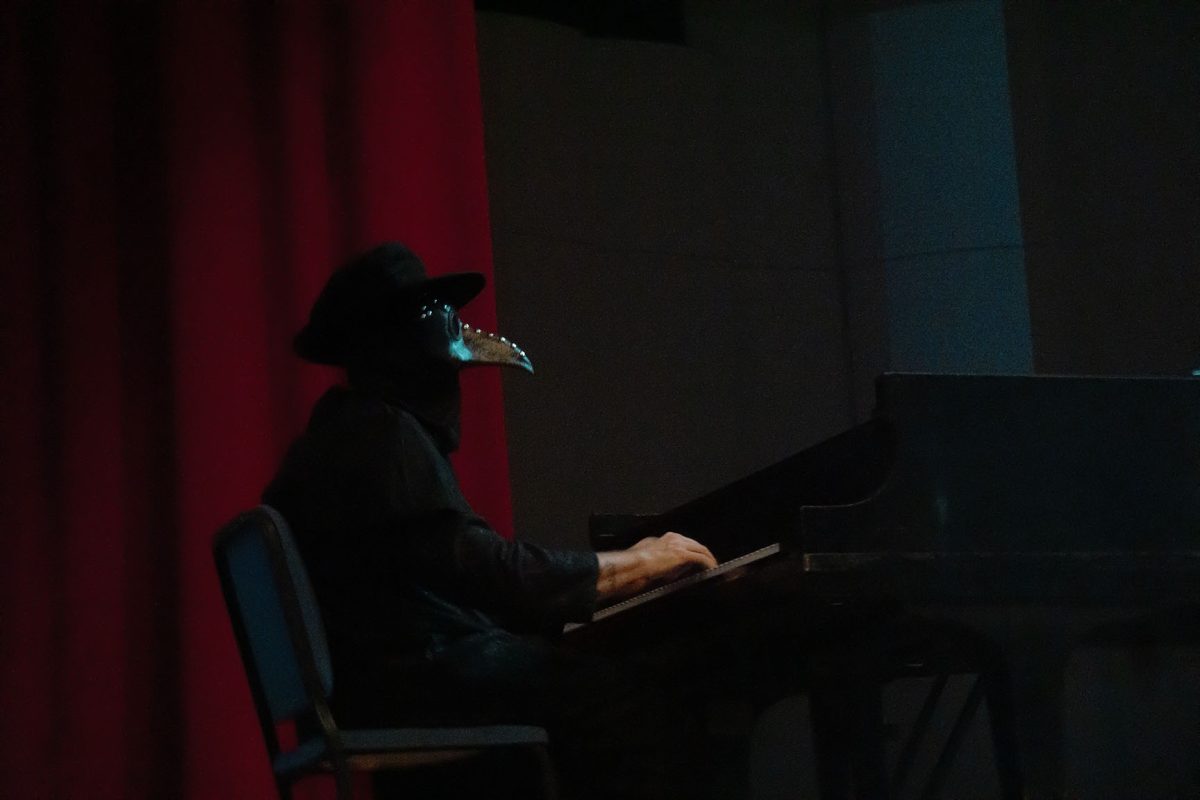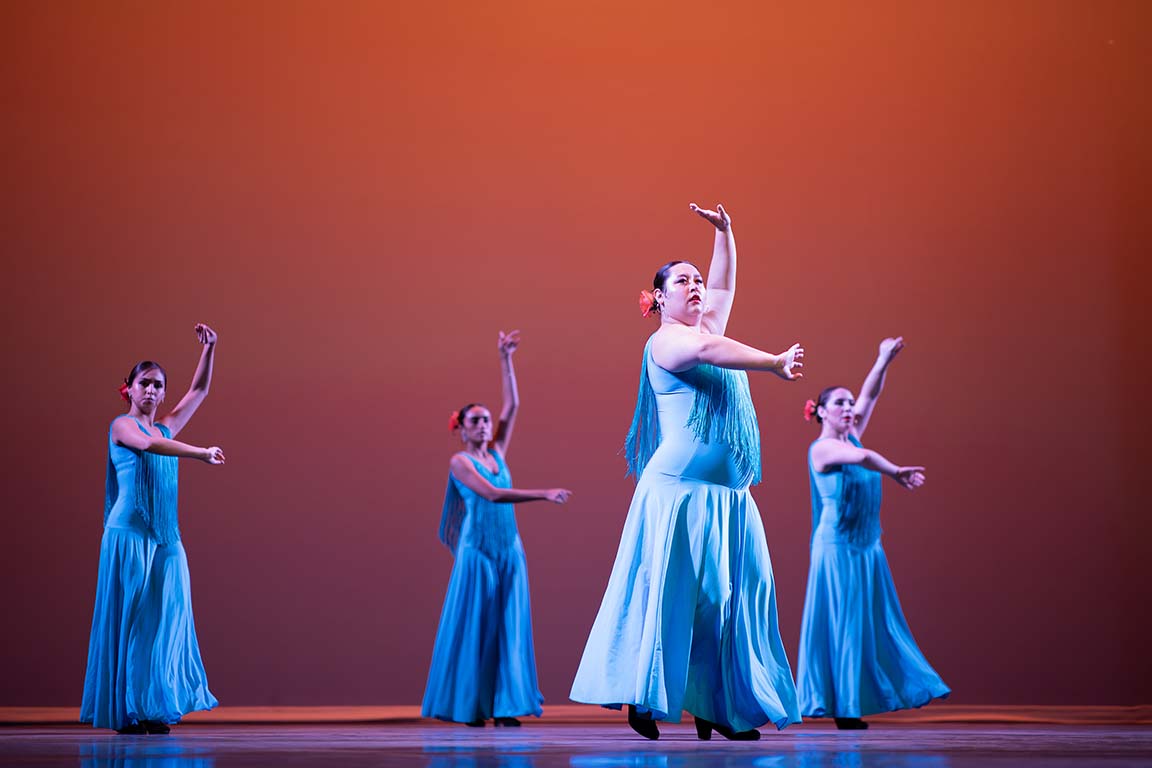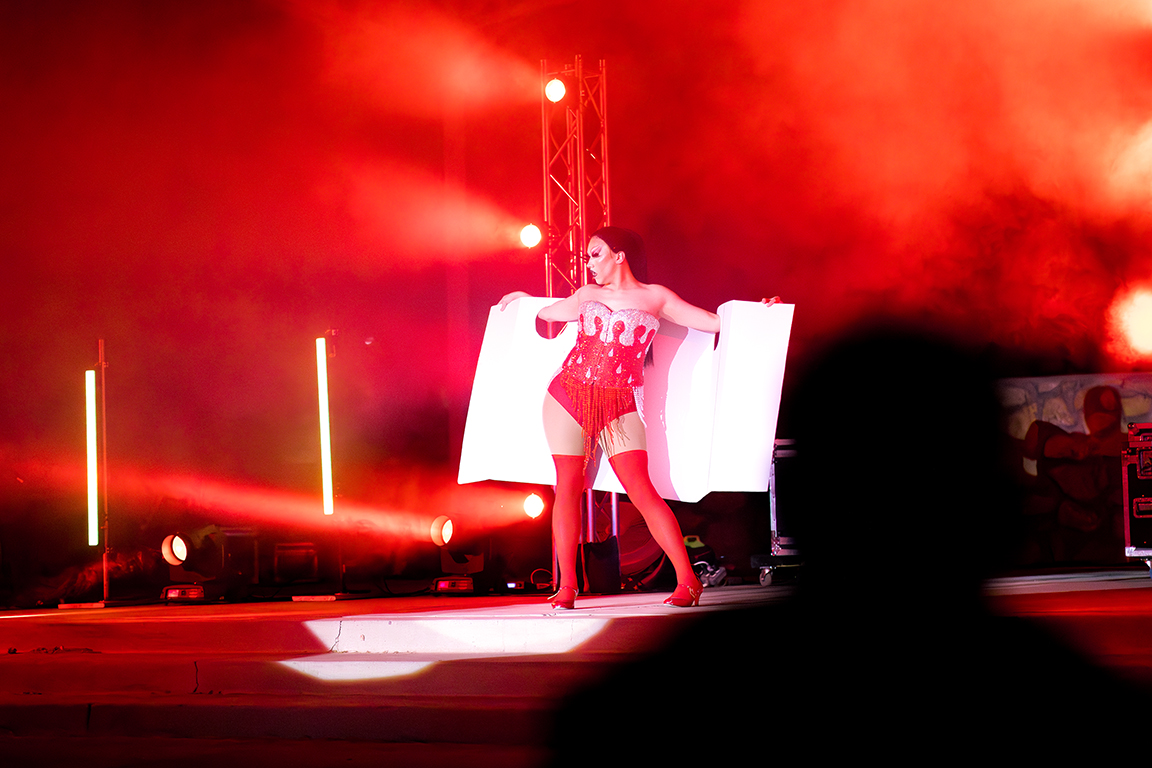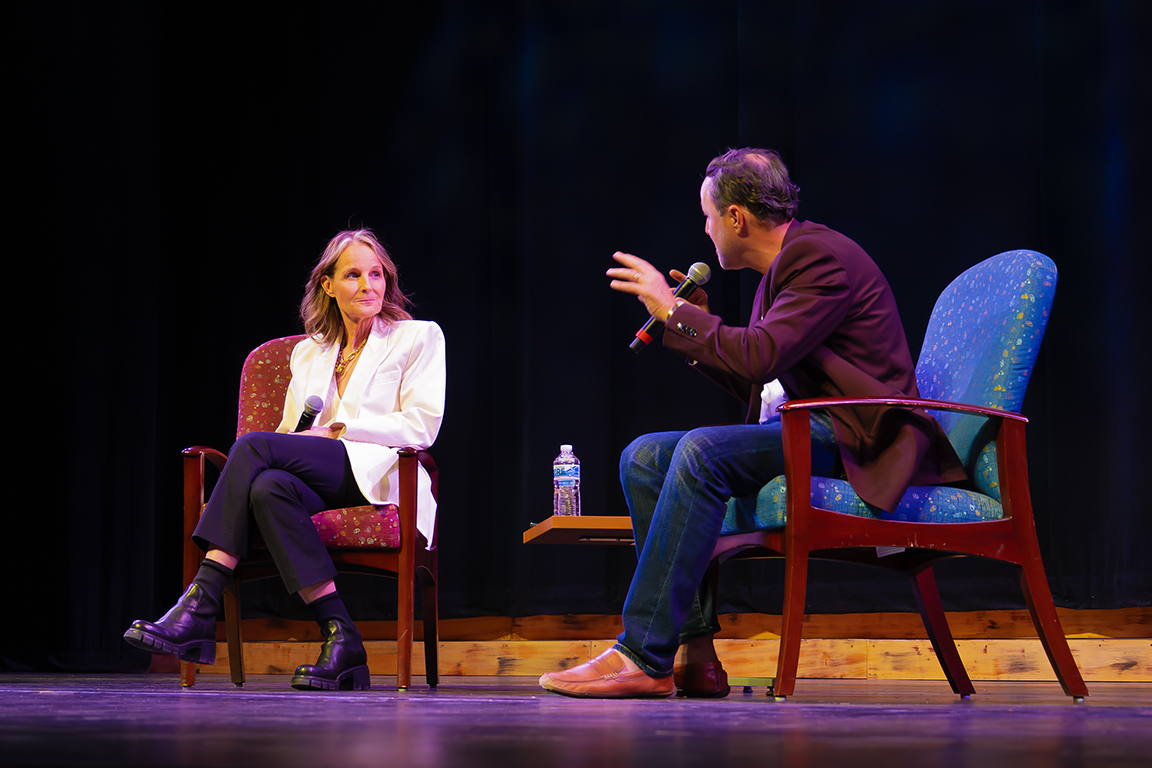The night before Halloween Atkinson Recital Hall was filled with costumed characters and gussied-up guests. As the lights flashed before dimming, everyone rushed to their seats to watch the music department’s sixth annual Halloween Silent Film Festival, this year titled the “Trio of Terror.”
The show featured Music Department faculty members Yoshiko Arahata on synth organ, Jacob Dalager on trumpet, Michael Mapp on piano, and Rhonda Taylor on saxophone. Alumni Tony Guerrero played percussion.
Together, the costume-clad ensemble played soundtracks for Mary Shelley’s “Frankenstein” as reimagined for a cinema audience by J. Searle Dawley in 1910. They also provided the sound behind the silent adaptations of Edgar Allan Poe’s “The Fall of the House of Usher,” by Jean Epstein in 1928, and “The Tell-Tale Heart,” by Charles Klein and Leon Shamroy in 1928.
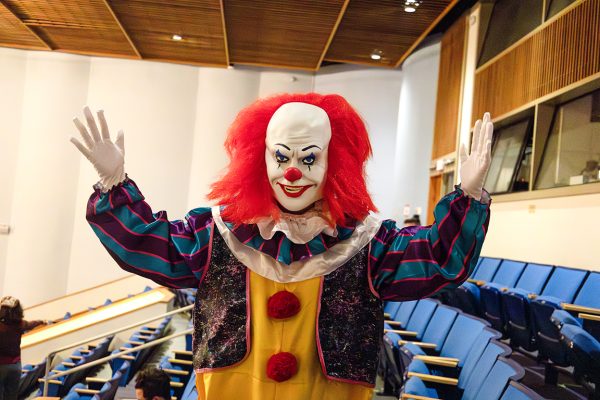
Dawley’s version of “Frankenstein,” a 12-minute black-and-white silent horror film, told the iconic story of young Victor Frankenstein. He was in college when he got the idea to create life and was left with a disfigured monster that proceeded to stalk and harass its creator for cursing it with eternal solitude. The cast of musicians creatively expressed the terror of Dr. Frankenstein and his wife, Elizabeth, as Frankenstein tried desperately to ignore the creature that he abandoned.
The brass and woodwind instruments played the frightening sounds that the couple made. This show even featured some musical humor as the performers improvised silly sounds for moments like when the monster hid behind a curtain or door.
In the French horror film “The Fall of the House of Usher,” the performers created a perfectly confusing cacophony of sound. It complimented the flowing changes of shapes and lightning that the movie had.
This was the only foreign film shown, and the plot revolved around a man visiting his friend in a deteriorating mansion. When the friend’s wife passed away, he asked for the man’s assistance in burying her body, and after that, frightening shenanigans ensue as the wife returns home, much to her husband’s disbelief.

What stood out most during this improvised soundtrack was Rhonda Taylor putting down her saxophone and using her voice to make eerie screeching noises during the entire movie.
“The Tell-Tale Heart,” by Klein and Shamroy, was the second Edgar Allan Poe story of the night. The main character lived with an old man he despises due to his “vulture-like” blue eye, then devises a plan to kill him. After doing so, the main character hides the body under the floorboards and attempts to maintain his composure as detectives arrive to investigate the old man’s disappearance.
It was during this film that percussion truly had a chance to shine as they played the heartbeat the main character heard under the floorboards while speaking to detectives and trying to remain composed. As the volume of the drum increased, so did the madness of the movie. It created the ultimate stressful atmosphere where the audience was invited to experience the anxiety that the main character dealt with within his own guilty conscience.
The music department’s “Trio of Terror” truly lived up to the expectation of a terrifying performance. Many times, audience members forgot that the music they were hearing was not coming from the same recording they were watching. Despite every artist doing their own interpretation of what felt right for the moment, they were always able to come together to create a cohesive piece of music that created a fitting environment.
It was the perfect way to begin Halloweekend and get into the spooky mood, while simultaneously appreciating the talent of NMSU’s music faculty.


